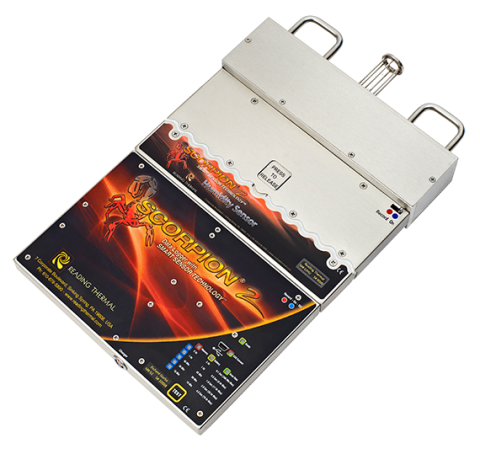Temperature fluctuations in your commercial baking oven can not only lead to undesirable changes in your products but will also affect food borne pathogens. Utilize the SCORPION® 2 Profiling System and Data Logger from Reading Thermal to improve your food safety and quality.
Reading Thermal, headquartered in Sinking Spring, Pennsylvania, has focused on researching the commercial baking process for more than 25 years. We manufacture and support the innovative SCORPION® 2 Profiling System and Data Logger that has become a standard in the baking industry.
Importance of Measuring Oven Temperature
Oven temperature is responsible for physical and chemical reactions in dough/batter, and temperatures that are too low or too high during baking can lead to changes in fermentation and humidity levels and undesirable changes in surface coloring, texture and flavor.
If you produce bread, artisan bread, rolls, hamburger buns, cakes, biscuits, or other bread products, you know that several stages of the process are temperature-dependent, such as oven-spring, drying/dehydration, and color formation.
Too much heat coming from one direction in the oven can cause the bottoms of the loaves to burn before the crusts brown properly. An oven that is too cool usually produces a heavy and unappealing loaf with a pale or soft crust.
Measuring and controlling internal food temperature is also key to achieving food safety. The Food Safety Modernization Act (FSMA) requires commercial bakeries to provide validation of process controls, or thermal kill steps, in an effort to reduce food borne pathogens, such as Salmonella spp, in ingredients and finished products.
Oven Temperature Measurement
If you produce bread, artisan bread, rolls, biscuits, hamburger buns, cakes, or other bread products, you recognize that several stages in your process are temperature-dependent, such as oven-spring, drying/dehydration, and color formation. Too much heat coming from one direction in the oven, for example, can cause the bottoms of the loaves to burn before the crusts are properly browned.
The Reading Thermal SCORPION® 2 Temperature Sensor Array is designed to measure temperature at product level, in fixed positions across the conveyor, and delivers a true representation of what your product is experiencing over time. Different types of pluggable sensors are available, including one designed for solid or tight mesh conveyors and one for open mesh conveyors.
The sensor array is connected to the SCORPION® 2 Data Logger and then travels through the oven with the product, yielding a precise picture of temperature from side-to-side and end-to-end.
Product-core-temperature measurements can also be made simultaneously via the product probe inputs on the sensor array. This can be the difference between excellent quality and an under-baked or burnt product.
Our state-of-the-art profiling system also provides an easy way to validate your kill step for food safety and FSMA compliance. FSMA requires commercial bakeries to provide validation of process controls, or thermal kill steps, in an effort to reduce food borne pathogens, such as Salmonella spp, in ingredients and finished products.
Reading Thermal can provide you with an oven temperature logger to ensure that you have the critical information you need to correct problems and maintain optimum conditions. Call us at (610) 678-5890 Ext. 2, or contact us online to learn more about our state-of-the-art products.

